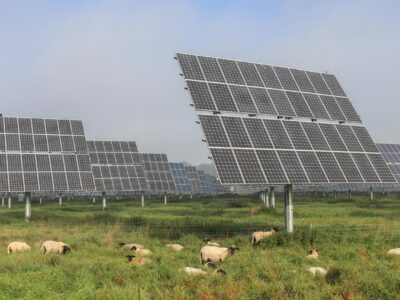It’s been a difficult few years for the agriculture industry. Farmers and producers across America have been affected by the pandemic and changing weather patterns, including floods, wildfires, and shifting cold and hot extremes. In September, the U.S. Department of Agriculture (USDA) announced nearly $3 billion in grants via the Partnerships for Climate-Smart Commodities program, designed to help agricultural businesses get back on their feet while reducing their carbon footprint.
Since the program was announced, the USDA has been overwhelmed with applicants, which has led to a funding increase. This year, the $2.8 billion in cost-share grants will help 70 different projects out of 450 applicants. The department expects more than 600 applications for the second round of funding set for late 2022.
“The USDA is delivering on our promise to build and expand these market opportunities for American agriculture and be global leaders in climate-smart agricultural production,” said Tom Vilsack, U.S. Secretary of agriculture. “This effort will increase the competitive advantage of U.S. agriculture both domestically and internationally, build wealth that stays in rural communities, and support a diverse range of producers and operation types.”
Each awarded project must pilot an innovative, cost-effective method for reducing greenhouse gas emissions. The project must voluntarily provide technical and financial assistance to climate-smart agriculture businesses and help promote the results.
Funding is already heading to projects addressing agriculture challenges related to various topics, including animal health, food supply chain issues, market disruptions, and drought. A half million dollars is set to aid in the market disruption, with up to $1.5 million earmarked for schools. Additional projects address reforestation, scaling methane emissions reductions and soil carbon sequestration, soil inventory, smart cotton, dairy research, and climate-smart beef and bison. A complete list of funded projects is available here.
Over the next five years, the USDA hopes these projects will move the U.S. closer to its net-zero carbon emissions goal by bringing climate-smart plans and practices to 50,000 farmers working 25 million acres of land.
The Partnerships for Climate-Smart Commodities program is set to expand markets and revenue streams for businesses who want to adapt to a changing Earth in sustainable ways. It also aims to connect businesses with more than 50 universities studying the most cost-effective and environmentally healthy ways to grow and distribute food. The agency believes the first 70 projects alone can sequester at least 50 million metric tons of carbon dioxide.
“American agriculture currently faces unprecedented challenges on multiple fronts. The coronavirus pandemic has impacted every stage of our food supply chain, from commodity production through processing and delivery,” said Secretary Vilsack. “Farmers, ranchers, and forest landowners increasingly experience the impacts of changes to the climate as severe storms, floods, drought, and wildfire events damage their operations and impact their livelihoods. We know these challenges will continue … and others may emerge … Tackling these challenges head-on better positions us to respond in the future.”





